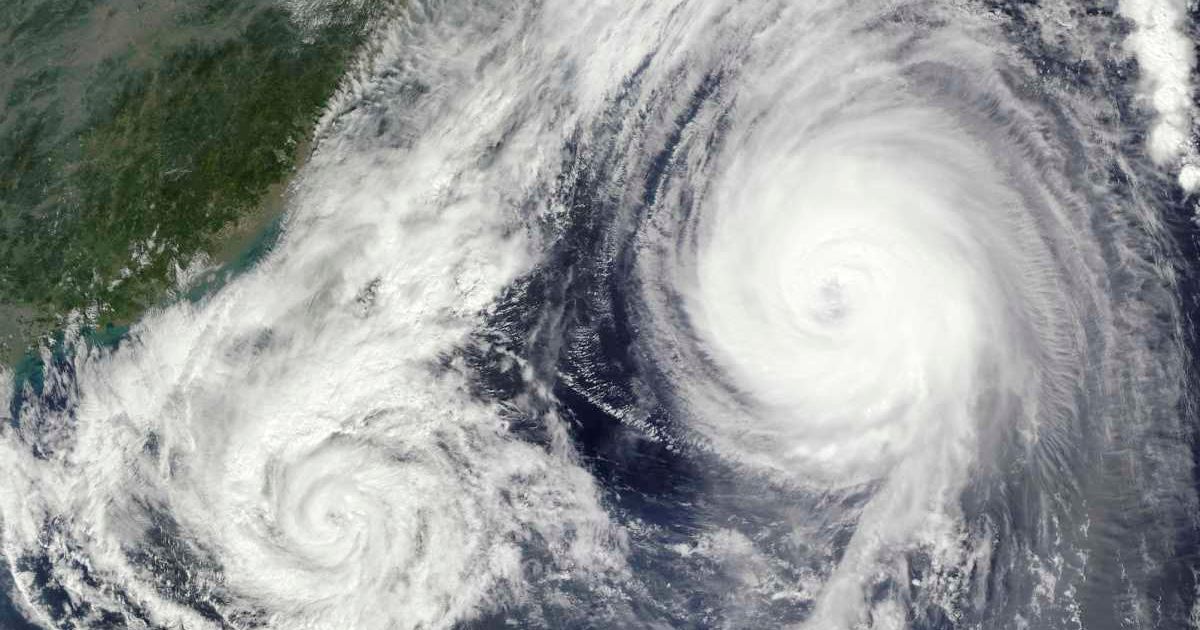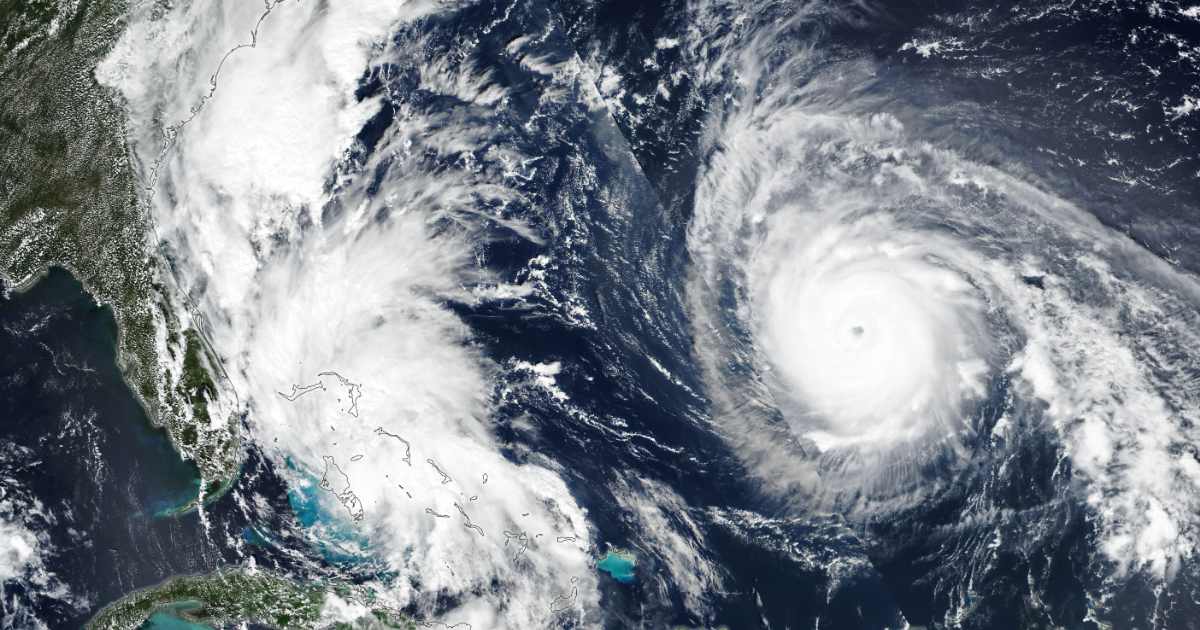Two Hurricanes in the Southwest Are Coming Close to Each Other — but Will They Collide?

Wringing torrents of heavy rain, Humberto lashed the coasts of Bermuda in the past week. The following day, Imelda, a newborn tropical storm, lifted from the Bahamas and rushed towards the southwest coast, eventually growing into a hurricane. A NASA satellite hovering above Earth captured Humberto and Imelda engaged in a surreal spinning waltz, something that climate scientists have called the “Fujiwhara effect,” according to NASA Earth Observatory.

Energized by the warm winds and waters of the ocean, while Humberto seems to be the dominant candidate in this tropical tug-of-war, as it pulls Imelda towards itself. Yet, no one can predict the destiny of either of the two candidates as of now. Scientists, currently, are curious to witness the ending of this spinning drama as the two hurricanes dance nearly 600 miles apart in the Southwestern Atlantic Basin. The image was captured by NASA's VIIRS, short for Visible Infrared Imaging Radiometer Suite, on the Suomi NPP satellite on September 28, 2025.

The moment both the stormy candidates swept towards Bermuda from different directions, the possibility of their epic collision laid down predictions for scientists to reflect on. Although nearly every possibility would prove to be a threat to the human population residing in the affected region, the collision would offer interesting insights to those who survive the storm. “If the two storms get too close to each other, it could trigger the ‘Fujiwhara Effect,’” storm chaser Mike Boylan warned while speaking to LiveNow FOX News. Named after the Japanese meteorologist, Sakuhei Fujiwhara, the “Fujiwhara Effect” is a weather phenomenon that occurs when two tropical storms, such as hurricanes or cyclones, get too close to each other, according to the Storm Shield App.

When two hurricanes are within 900 miles of each other, they can become pulled into a spiraling matrix and start orbiting next to each other. What happens next depends on the size and intensity of each hurricane. If the individuals go on to come within 190 miles of each other, they will likely crash and merge into each other, becoming a singular, power-packed storm. If the two hurricanes differ in intensity, the more intense one can throw the less intense one off course. Another possibility is that their interaction can cause the two hurricanes to start spinning around a center point, like a dance in an anti-clockwise direction.
This is not the first time two hurricanes have come too close to each other. From time to time in history, America has been witnessing this spinning dance like a movie on repeat. In 1995, Iris came into proximity with Humberto, eventually swallowing up Karen and Lewis. In 2005, Hurricane Wilma gobbled up the tropical storm Alpha off the East Coast. In 2017, Hurricanes Hilary and Irwin got trapped in a similar dance. By the end, Hilary changed Irwin’s course from west to north. In case of the latest hurricane candidates, Humberto appears to be pulling on Imelda, per NASA. But the ending is still a mystery.

Boylan suggested that factors like winds, storm surge, and water temperature could help scientists make better predictions for what’s to come. NASA scientists, who have already pondered over many of these details, believe that the two hurricanes are not likely close enough for a “full mutual merging.” Their interaction, they say, is “more one-sided” with Humberto being the dominant candidate. Whether Humberto merges with Imelda or eats it up or continues this spinning dance, only time will tell.
More on Green Matters
Stunning Footage Shows a ‘Volnado’ Spin Beside Blazing Lava Fountain in Hawaii
NASA Satellite Captures Heartbreaking Visuals of the World’s Largest Iceberg’s ‘Imminent Demise’